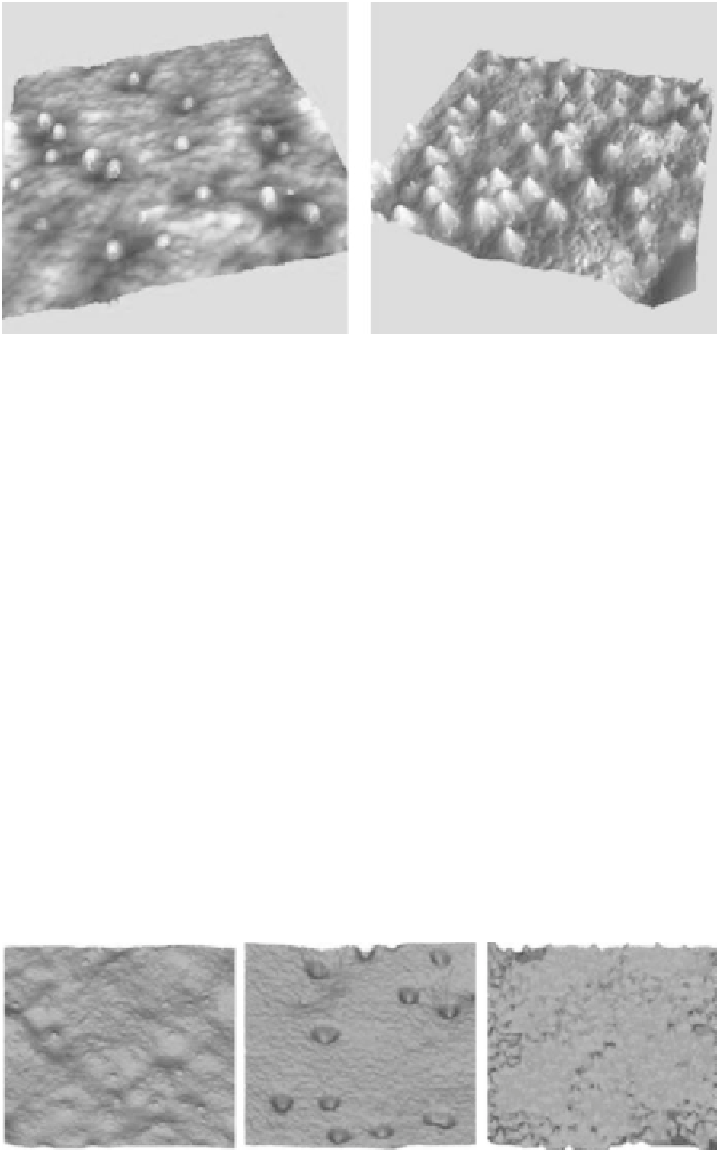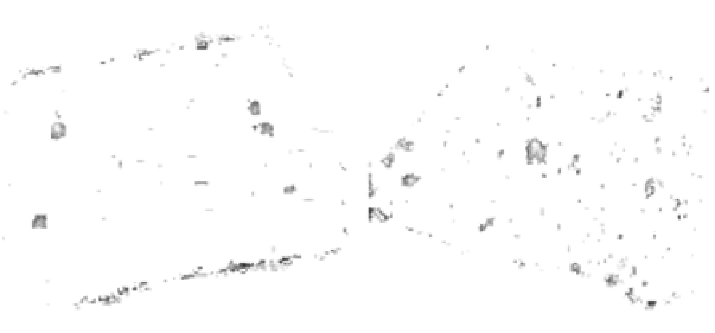Biomedical Engineering Reference
In-Depth Information
(a)
(b)
FIGURE 15.4
Surface.of.
Plasmodium falciparum
.infected.red.blood.cell..(a).lab.clone.vs..(b).ield.isolate.
(some.of.which.are.over.30.years.old,.post.isolation).bear.little.resemblance.to.the.parental.
cell. line. both. genetically. and. phenotypically.. For. example,. the. density. of. knobs. found.
on. the. IRBCs. of. laboratory. clones. is. relatively. low. compared. with. that. found. on. newly.
isolated.parasites.from.malaria.patients..Furthermore,.the.morphology.of.knobs.on.labora-
tory.clones.appears.more.round.and.smoother.than.that.on.ield.isolates.(Figure 15.4).
Aside. from
P. falciparum,
other. species. of. human. malaria. parasites. also. cause. signii-
cant.changes.to.the.surface.nanotopograpy.of.host.RBCs..The.poorly.understood.cause.of.
quartan.malaria,.
Plasmodium malariae
.induces.the.host.cell.to.form.small,.spiky.knob-like.
excrescences.(which.we.refer.to.as.spikes).on.the.surface.of.all.sexual.and.asexual.erythro-
cytic.stages.(Figure 15.5c)..The.function.of.these.spikes.is.not.yet.understood;.however,.it.is.
unlikely.they.assist.the.IRBCs.to.cytoadhere.in.a.
P.
.
falciparum
-like.manner,.as.all.stages.of.
this.parasite.are.found.circulating.in.the.peripheral.blood.system.
13
.The.IRBCs.of.the.sec-
ond.most.important.cause.of.human.malaria,.
P. vivax
,.are.covered.in.cavolae-like.depres-
sions,.as.opposed.to.the.raised.nanofeatures.of
P. falciparum
(knobs).and.
P. malariae
(spikes).
(Figure 15.4)..As.with.spikes.of.
P. malariae
,.the.genesis.and.function.of.the.caveolae.on.the.
surface.of.
P. vivax
.IRBCs.are.still.unknown.
(a)
(b)
(c)
FIGURE 15.5
Three-dimensional.surface.plots.of.(a).
P. falciparum
,.(b).
P. vivax
,.and.(c).
P. malariae
IRBCs..Scan.size.=.2.µm.



